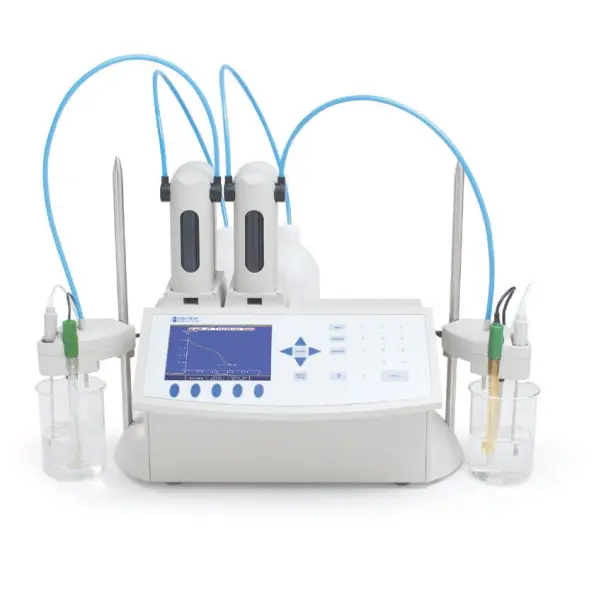
Environmental Monitoring of Nitrates and Other Water Quality Parameters: pH,
Environmental Monitoring of Nitrates and Other Water Quality Parameters: pH,...

As far back as 1350 B.C, civilisation has valued the strength and durability of steel. Steel is an alloy, or a mixture of metal and other ingredients, made from iron and carbon. Typical steel alloys have a carbon content of around 2.1%. Steel finds use in a wide variety of different applications due to the wide range of properties steel can take on during its production. Everything from car chassis to surgical instruments can be made from steel.
Steel production begins by smelting iron ore, an iron-bearing rock. Recycled scrap metal may also be added during the smelting process. The smelting process melts the iron ore and scrap together into the liquid iron base metal. After smelting, the resulting molten iron is a carbon-rich compound called pig iron. Pig iron is far too brittle for use as a material in other industries due to its high carbon content, so further refining is required. To reduce carbon content, the pig iron is poured into a ladle, a large container designed to contain molten metal. Then, high-purity oxygen is injected into the molten pig iron, which prompts a reaction with the excess carbon in the steel to form carbon dioxide. Finally, flux (usually dolomite or limestone) is added to form slag, a glass-like product that absorbs impurities in the steel. After adding flux, the slag is separated from the steel. The steel may then produce a variety of different products, or may be alloyed with materials such chromium to produce stainless steel.
During steel processing, a thick layer of scale is formed on the outside surfaces due to oxidation. Scale is a flaky oxide surface composed of various iron oxides; this is problematic for facilities performing surface treatment on the base metal because any applied coating would simply fall off once the scale fakes. These coatings include plating, paint, powder coatings, and other metal finishing operations. Before these surface treatments can be performed, the scale must be removed from the steel. This is done by a process called metal pickling.
Metal pickling is a treatment performed to remove rust, scale, and other contaminants from the surface of a metal. Strong acids make up the pickling bath. Hydrochloric or sulfuric acid are the most common pickling acids, although others may be used. The type of steel and type of surface treatment to be performed will dictate the exact pickling process. For example, high alloy steels like stainless steel need to be pickled in a two-stage process, often with baths containing nitric and hydrofluoric acid. In all types of pickling baths, the acid content is a critical parameter to ensure the quality of the pickle. Excess acid may lead to damage to the base metal while too little acid results in slow pickling. The ideal acid content for steel is approximately 5-15% for hydrochloric acid and 7-20% for sulfuric acid.
Application:

A steel mill contacted Hanna Instruments for a way to measure the acidity of their acid pickling baths. Hanna offered the HI902 Automatic Potentiometric Titrator. Since they had several pickling baths with different ingredients, it was important that they had multiple methods to accommodate each of these baths. Hanna worked with the customer to ensure that each bath number had its own method, with the primary acid expressed as the result for each bath. The customer also appreciated how the complete reports included the date and time, result, and calibration data, which helped ensure accuracy, traceability, and batch reporting.
Since the customer was also manufacturing and pickling stainless steel in a nitric and hydrofluoric acid (HF) based bath, they were concerned about the longevity of a standard glass pH electrode. Hanna Instruments offered the HI1153B combination pH electrode for HF applications. This electrode is resistant to HF at less than g/L and at pH >2, which made it ideal for the titrations of their stainless steel pickling baths. Overall, the customer was pleased with the knowledge, service, and products that the Hanna team offered to them.
Environmental Monitoring of Nitrates and Other Water Quality Parameters: pH,...
Salt Concentration In A Brine Solution For Curing Salmon Traditionally,...

To empower customers to achieve quality by supplying intuitive, accurate, and reliable analytical instruments with exceptional customer service and value.
We take pride in every product we build. From an original idea to a completed product ready for testing. We oversee every aspect of the manufacturing process. It is this level of attention to detail that sets us apart.
To empower customers to achieve quality by supplying intuitive, accurate, and reliable analytical instruments with exceptional customer service and value.
We take pride in every product we build. From an original idea, to a completed product ready for testing. We oversee every aspect of the manufacturing process. It is this level of attention to detail that sets us apart.
To empower customers to achieve quality by supplying intuitive, accurate, and reliable analytical instruments with exceptional customer service and value.
We take pride in every product we build. From an original idea, to a completed product ready for testing. We oversee every aspect of the manufacturing process. It is this level of attention to detail that sets us apart.

